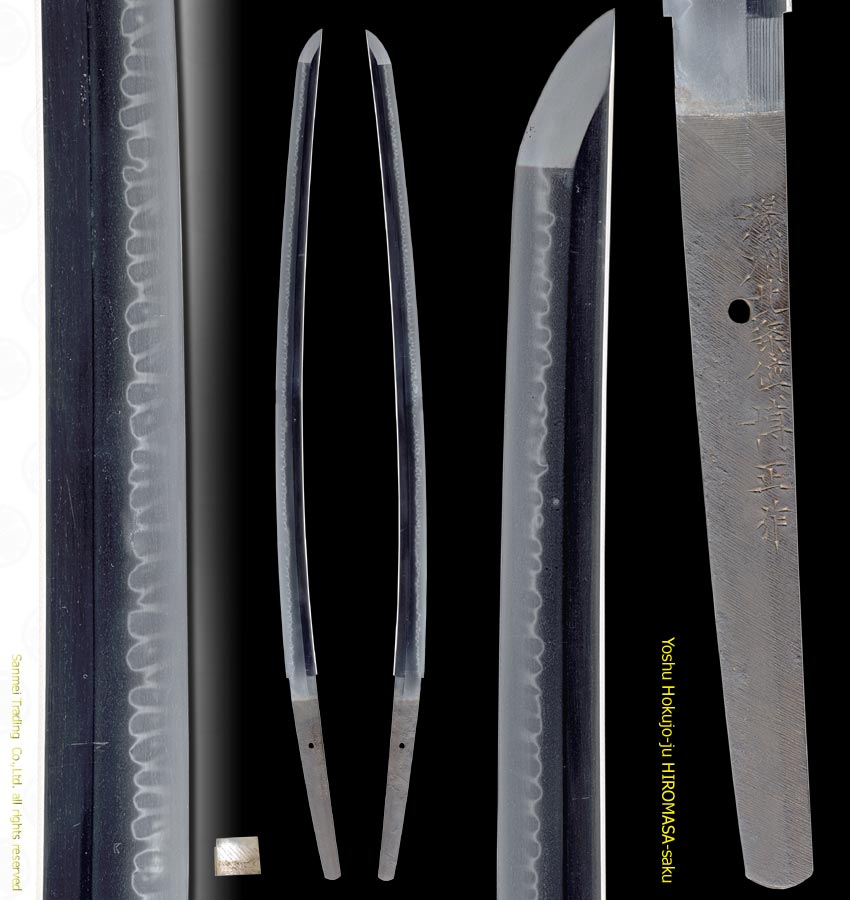Length of cutting edge69.7cm Curvature1.5cm Width of base32.2mm Width of Yokote22.3mm Thickness of base7.5mm
Forging pattern (kitae hada) : Kitae hada is tight and fine Itame-hada in hiraji whereas shinogi-suji shows a Masame-hada. The hiraji is covered in a slight ground reflection (UTSURI).
Tempering pattern (hamon) : Hamon is clove-outline (CHOJI-HA), Nioi-based, there works with slanted clove-feet working toward the cutting edge. The SHIMAs (tempered spots marks) are floating and the brushing lines (Hakikake) in the interior of temper.
Temper of tip (boshi) : Boshi is disorder (midarekomi) with hakikake brushing marks.
Tang (Nakago) : Nakago is unaltered UBU. One Mekugi-ana. Osujikai and Kesho file-marks with round heel shape. The signature in omote starts with living place [Yo-shu, Hokujo-ju] and then smith name [HIROMASA-saku].
The smith HIROMASA, his real name is Kamematsu Torio, lived in Hokujo-town, Onsen-gun, Ehime (Iyo) province, learned from a master Yoshimune Takahashi. He is very good at Choji-midare (clove-outline) of Bizen-school and one of the skillful craftsmen in Showa era who reproduce Ichimonji clove temper line. There filled with soft nioi like in a Spring mist and the clove outline like the cherry blossom in full bloom. The entire blade is relatively good condition and in an original polish with some minor pitted and slight scratch marks, those are normal wares in consideration of age and an original state of polish. There are some marks of decay in the reverse side of the tang. An excellent example of Bizen-school and one of the superior works by the artisan HIROMASA. His existing works are comparatively few since he died when he was as early as 45 years old, in 1953.
Silver Habaki collar comes in Shira-Sya plain wood mounting and sheath.
